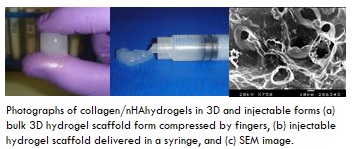
Ahmed Abd El-Fattah
Alexandria University, Egypt
Title: Injectable antimicrobial collagen/nanohydroxyapatite hydrogel scaffolds for bone regenerative applications
Biography
Biography: Ahmed Abd El-Fattah
Abstract
Bone is a complex, highly organized living organ forming the structural framework of the body. It is a naturally existing composite that is composed of an inorganic mineral phase of hydroxyapatite (60% by weight) and an organic phase of mainly type I collagen. Bone defects are a serious illness that may result after a pathological process has destroyed vital components of the bone. Recently, Injectable hydrogels have been used in bone regenerative applications, because of their high tissue-like water content and moldable features. Such injectable hydrogels are of particular significance because drugs, cells, proteins, and bioactive agents can be essentially incorporated into polymer solutions before administration. In this work antimicrobial injectable hydrogel scaffolds based on a biopolymer matrix composed of collagen, reinforced with the nanohydroxyapatite (nHA), were prepared. The chemical structure, morphology, and swelling ratio as well as mechanical and viscoelastic properties of the prepared hydrogel scaffolds were investigated. For drug-release tests, gentamicin, an antibiotic drug, was entrapped within the scaffold, and the drug-release profile was examined The results revealed that the incorporation of the nHA particles into the collagen hydrogel enhanced the mechanical and biodegradable properties and also cause a reduction in both the hydrogel porosity and swelling ratio. Furthermore, the rheological studies showed that the collagen/nHA hydrogel scaffolds is non-Newtonian viscoelastic material with more elastic dominance and exhibited higher stiffness. These properties make the injectable hydrogel of potential interest as biomimetic scaffold for bone regeneration operations in diverse applications. Consequently, this collagen/nHA hydrogel scaffold will provide an opportunity to translate lab research to the market and to apply the principles of tissue engineering in the clinical settings.

